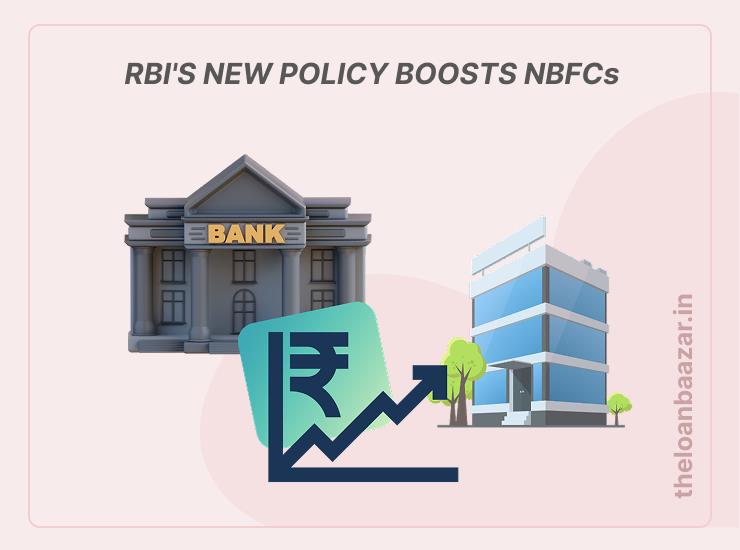A Turning Point for NBFCs
India’s non-banking financial companies (NBFCs) play a critical role in bridging the credit gap, particularly in infrastructure financing. However, regulatory restrictions and capital cost pressures have long constrained their growth. Recently, the Reserve Bank of India (RBI) announced a series of policy measures that global investment bank Morgan Stanley described as a “big relief” for NBFCs — especially those focused on infrastructure lending.
From reducing risk weights on infrastructure loans to removing restrictions on overlapping businesses between banks and their NBFC subsidiaries, these measures mark a strategic shift in regulatory thinking. Let’s dive into what this means for NBFCs, infrastructure development, and the broader economy.
A Strategic Pivot: RBI Signals Support to NBFCs
The RBI’s latest policy decisions reflect a clear intent: to support credit flow while ensuring stability. Over the past few years, NBFCs have faced tightening regulations, largely in response to episodes of stress in the sector.
But now, by easing some restrictions and aligning regulations to promote infrastructure investment, the RBI is signaling trust in NBFCs’ role as credit intermediaries. Morgan Stanley highlights that this policy change could unlock new lending capacity and strengthen investor confidence in NBFCs.
Removing Overlap Restrictions: Flexibility for Bank-Promoted NBFCs
One of the most notable changes was the removal of proposed restrictions on overlapping business activities between banks and their NBFC arms.
-
Earlier draft regulation: RBI had proposed limiting banks and their NBFC subsidiaries from engaging in overlapping lines of business to reduce conflict and systemic risk.
-
Final regulation: These restrictions were dropped, giving bank-promoted NBFCs strategic flexibility to operate more freely.
This decision is particularly important because bank-promoted NBFCs play a large role in specialized lending segments. Without overlap restrictions, these entities can now complement — rather than compete with — their parent banks.
Lower Risk Weights for Infrastructure Lending: A Game Changer
Perhaps the most impactful change is RBI’s plan to reduce risk weights on loans to operational, high-quality infrastructure projects.
Why does this matter?
-
Under existing norms, NBFCs must hold a certain percentage of their capital against loans (risk weights).
-
By lowering risk weights on safe infra projects, RBI is effectively reducing the capital burden on NBFCs.
-
This makes lending more efficient, lowers cost of funds, and enables NBFCs to expand their credit portfolios.
Infrastructure finance NBFCs (NBFC-IFCs), such as PFC and REC, are expected to benefit significantly. These institutions already lend heavily to operational infrastructure, and now their capital will stretch further, fueling more growth.
Who Gains the Most: Winners in the NBFC Space
-
NBFC-IFCs (Infrastructure Finance Companies): RBI requires these firms to keep 75% of assets in infrastructure lending. With lower risk weights, they directly benefit.
-
Bank-promoted NBFCs: With the removal of overlap restrictions, these firms gain more operational room and can strategically align with parent banks.
-
Broader NBFC sector: While the primary relief targets infra-focused NBFCs, improved investor sentiment and liquidity could spill over into retail and MSME-focused NBFCs as well.
According to Morgan Stanley, this could trigger structural re-rating of NBFC stocks as market confidence strengthens.
Risks and Caveats: Proceed with Caution
While the measures are positive, it’s important not to get carried away:
-
Conditional relief: Risk weight reductions apply only to operational, high-quality infrastructure projects. Riskier or under-construction projects remain subject to higher capital charges.
-
Execution risk: NBFCs must ensure governance and credit discipline to avoid over-leveraging.
-
Macro factors: Interest rate cycles, inflation, and overall infrastructure demand still affect lending activity and profitability.
In short: relief is real, but prudent risk management remains essential.
Broader Impacts: Infrastructure Growth & Credit Flow
The new policies don’t just benefit NBFCs — they have larger implications:
-
Boost to infrastructure investment: India’s $1.5 trillion infrastructure pipeline needs robust financing. NBFCs, with lighter capital requirements, can now play a bigger role.
-
Strengthened bank-NBFC collaboration: Co-lending and joint project financing may increase, creating synergies.
-
Capital market confidence: Investors are likely to view the NBFC sector as safer, potentially leading to more equity and bond inflows.
By supporting NBFCs, RBI is indirectly pushing forward India’s infrastructure growth agenda, which is critical for jobs, GDP growth, and global competitiveness.
Key Takeaways: What NBFCs Should Do Now
-
Reassess capital strategies in light of lower risk weights.
-
Prioritize lending pipelines toward operational, creditworthy infra projects.
-
Strengthen compliance and governance to meet heightened scrutiny.
-
Leverage bank partnerships for co-lending opportunities.
-
Communicate with investors about the improved regulatory environment to attract fresh capital.
Frequently Asked Questions (FAQs)
Q1. What is the biggest relief for NBFCs in the RBI’s new policy?
The reduction in risk weights for loans to operational, high-quality infrastructure projects. This lowers capital requirements and boosts lending capacity.
Q2. Which NBFCs benefit the most?
Infrastructure finance NBFCs (like PFC, REC) and bank-promoted NBFCs. However, improved sentiment could support the entire NBFC sector.
Q3. Does this mean NBFCs can take more risks now?
Not exactly. The relief applies only to high-quality projects. Riskier projects remain under stricter capital requirements.
Q4. Why did Morgan Stanley call this a “big relief”?
Because these measures reduce structural constraints, improve capital efficiency, and give NBFCs room to expand infrastructure lending, which is vital for India’s growth.
Q5. Will this affect retail NBFCs?
Indirectly, yes. While targeted at infrastructure finance, improved liquidity and investor confidence may benefit NBFCs in housing, vehicle, and MSME lending too.
Conclusion: Relief With Responsibility
The RBI’s latest policy measures represent a strategic shift toward supporting NBFCs — a sector critical to India’s credit ecosystem. By reducing risk weights for infrastructure loans and removing overlap restrictions for bank-promoted NBFCs, the regulator has offered both relief and growth potential.
Morgan Stanley’s endorsement underscores the global confidence in this direction. For NBFCs, the opportunity is clear: channel the relief into disciplined, high-quality lending that strengthens both their balance sheets and India’s infrastructure future.
If executed well, these measures could mark the start of a new growth cycle for NBFCs, positioning them as stronger pillars in India’s financial system.












